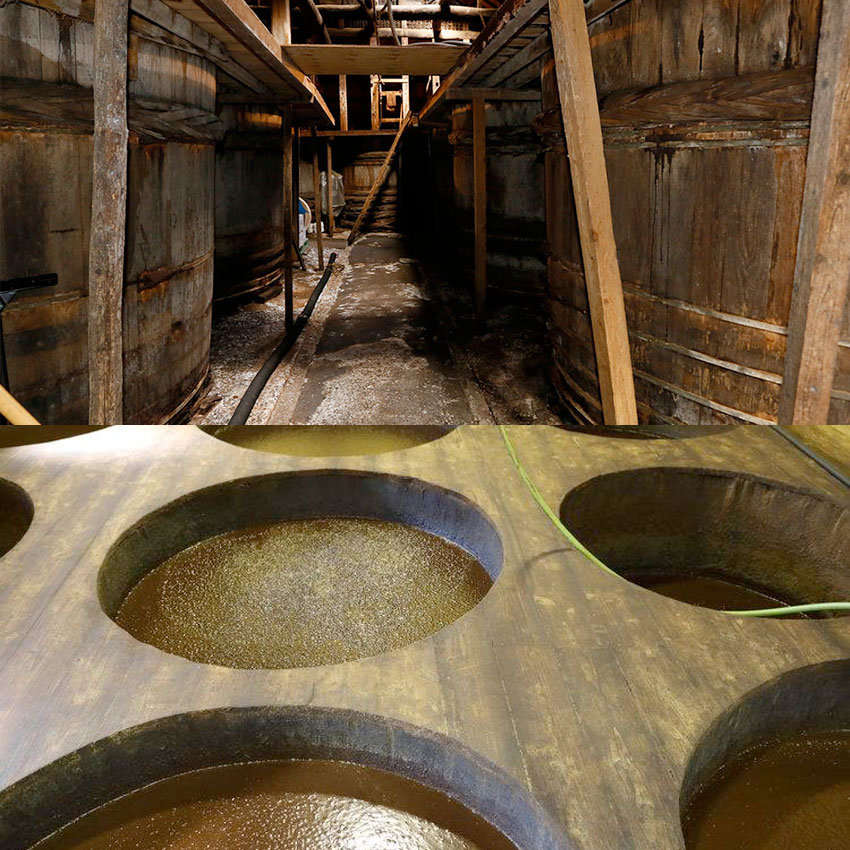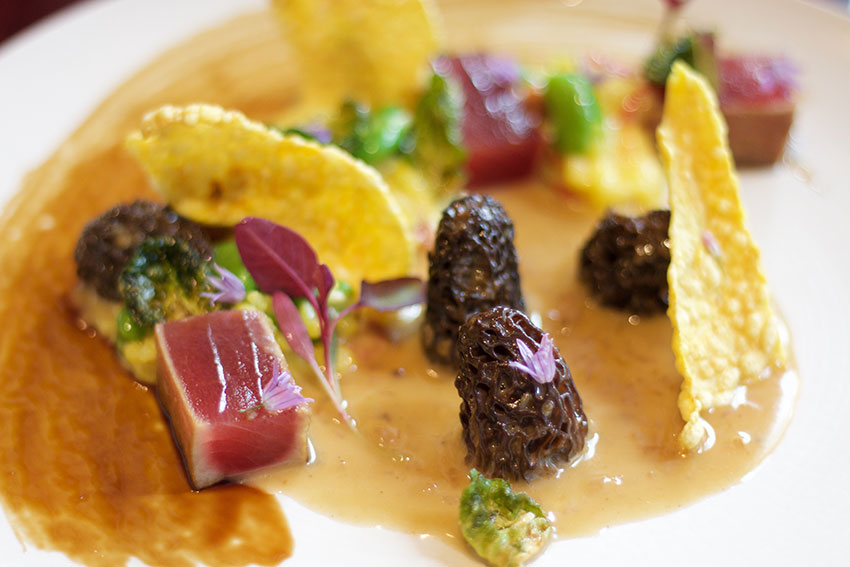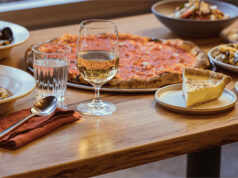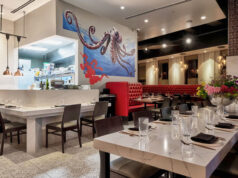From time to time, an ingredient rises to our senses that is instantly provocative and distinctly exceptional, something rare, pristinely integral, available in limited quantities, not to mention the killer bottle and logo. Haku is not your local sushi joint’s shoyu/soy sauce or fish sauce. Haku ingredients are in a category all their own.

What better than to enroll award-winning, T.V. veteran, Executive Chef Yu Lin, of Palo Alto, California’s stunning By The Sea (Alexander’s Steak House), to create an impromptu recipe utilizing Haku (Smoked) Shoyu, Ahi Tuna, and some divine fresh morals picked from his garden that very morning.
Ingredient Insight
All Haku Shoyu is made in Kyoto by masters of the craft using age-old techniques. Haku Mizunara Whisky, Barrel Aged Shoyu is produced using the 250-year-old mushiro koji method, a time and labor-intensive fermentation process that makes the finest soy sauce.
On the skirts of Kyoto, Japan, 3rd generation shoyu
masters work with local farmers to select the finest grains and closely follow traditional methods handed down through generations to craft one of the most respected Shoyus in Japan, Haku Shoyu.
Haku, newly available in this country in limited quantities, is gaining notoriety for the progressive nature of the current generation who are utilizing western culinary creativity blended with traditional principles.

Executive Chef Yu Min Lin
After 10-years as Executive Sushi Chef at Shintori Cuisine Japonaise in Taipei and Shanghai, Yu Min moved to LA to work with celebrated chef Michael Cimarusti honing his classical French cooking. Great success followed in the form of Michelin Stars, Top Restaurant (Gourmet Magazine) accolades, and working with the likes of Chef Thomas Keller and his team. Lucky for Palo Alto, Yu Min decided that the Bay Area was the place he wanted to make his mark.
 Chef Lin’s Favorite Cooking “Medium”: Locally caught seafood and locally farmed vegetables.
Chef Lin’s Favorite Cooking “Medium”: Locally caught seafood and locally farmed vegetables.
“I grew up in Taiwan, a little island surrounded by water, seafood was easy to get. I consider seafood a higher-end, healthier, and more artistic ingredient to cook with and it pairs much better with a variety of vegetables than other beef. For instance, you never see a beef and beet dish, or artichokes and beef… meat and vegetable combinations are much more limited.”
Philosophy
“I try to cook as naturally as I can now. It’s all about simplicity. Last year I went to Big Sur with a friend who is a fisherman and diver. He invited me to go with him and look for sea urchins. The property we stayed on did not have any electricity or water. We slept in his truck camper. In the morning I said I was hungry and asked what we were going to eat and he said ‘let’s go fishing.’ So we caught some fish and grabbed some seaweed and that was breakfast and lunch. This was the most delicious fish I ever had. The property owner also had fruit trees and grew vegetables. We picked some hard avocados and put them on the grill. It was like strange mashed potatoes but it was so good because I was hungry.”

Saffron Rice Risotto, Fava Bean, Smoked Soy and Balsamic Glaze.
The Future is Seafood
“The main reason I wanted to cook in the Bay Area is that I saw the area as an area where people really value a healthy lifestyle and fitness. My cuisine is ideal for this. Surprisingly there are not a lot of restaurants offering exceptional seafood and locally farmed vegetable dishes. Our reservations are tripling now, which means we always need the best, freshest seafood available. Tim Ports, of Ports Seafood, really knows what he’s doing. He has a great product. He knows everyone wants wild fish and he brings a high level of expertise and reliability to the table.”
How do you keep an ingredient sacred and share it with
the world?
“As long as the ingredient is still made from original owners it’s fine. Original owners control quality. When you grow too big and let go of original owners or generational craftsman traditions, you end up bastardizing and diluting the
the essential quality of a product.”
An antique anecdote: A man gets famous for his incredible massages, so everyone wants a massage from him, so he gets 8000 massage reservations for one day. There is no way he can fill that. This is the way for a company too. You are providing a special service/product by hand that cannot be replaced. Staying consistent is very difficult.”
The “funny story” of how Chef Yu Min Lin became Chef Yu Min Lin
“When I was in the 6th grade, about 13 years old, I noticed a friend of mine wasn’t coming to school anymore. When I saw him on the street I asked, ‘Why aren’t you in school?’ He said, ‘I’m working part-time at a restaurant in Taipei.’ I wanted to see the place, so I went with him on a bus (it cost 8 cents for a bus ticket at the time.) He was working at a very nice Italian restaurant. It was the very first time I had ever seen a dining room like that. Peeking through the windows, I stood there with my mouth open in awe. There were candles and chandeliers, sparkling glasses, bright white tablecloths, and servers in really nice uniforms. At 13, having grown up in Taiwan, I had never seen anything like that. And I was like, ‘What the hell?! Is this real?’
I grew up with my mom cooking a bunch of things and throwing them on the table and us gobbling up all the food as fast as we could. That’s what eating was in our family. And then I saw this. I said ‘I would like to work here too please!’
At my first ‘staff meal’ they served us Hong Kong Style Pasta, (pasta, beef and mushroom, and cream sauce.) I ate like six bowls! I scared all the chefs! I started working there every day after school from 5:30 pm to 10 pm, and I have never stopped working in kitchens since.”
















